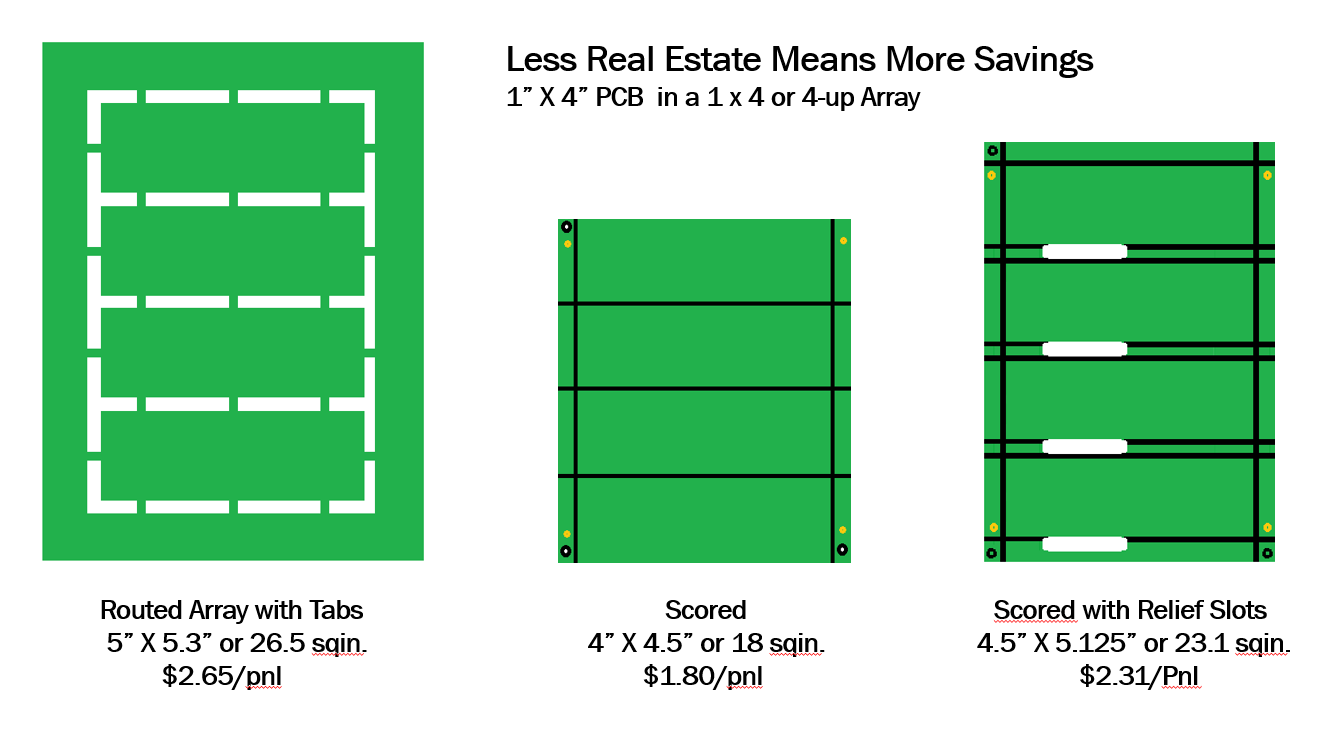
From solder paste printing, component placement and soldering—and even to final testing—it is generally more cost-effective to assemble printed circuit boards (PCBs) that have been panelized (also known as manufactured in an array).
But if assemblers don’t take the design of the array itself into account, they may be throwing away the money and time saved through panelization.
That’s because when it comes to PCB pricing, the number of square inches of the array has a significant effect. More square inches means higher PCB piece pricing.
In other words, size matters.
Good circuit board buyers, seeking to control costs, will raise the issue of array size with their production and engineering departments. You should be asking questions not only about new projects, but existing ones as well.
For instance, do the mounting rails have to be as wide as they are? Must those rails be on all sides? And instead of the time-consuming routing process, can the PCBs be scored?
As an illustration, consider the three examples pictured above of a 1 x 4-inch PCB in a 4-up array.
Using $0.10 per square inch as a cost, you can see how the price differs based upon the size of the array.
The cost savings are especially impressive when the rail size is reduced from 1 to 0.25 inches, with rails on two sides as opposed to four, and with the use of scoring instead of route.
We expect continuous improvement in PCB production and quality processes. Shouldn’t we also expect it in pricing?
Unless there is a design or component placement issue that is required for ease of assembly, you should be looking at ways to reduce the array size of your PCB projects.
And if you know how to leverage your supplier base, you can get those projects re-tooled at no additional cost, with a lower piece price.
My company specializes in PCB supplier management. I can help you cut your board-buying costs. Reach out to me at greg@directpcb.com.
Click here to get a free copy of my book, PCB Basics for Buyers.
